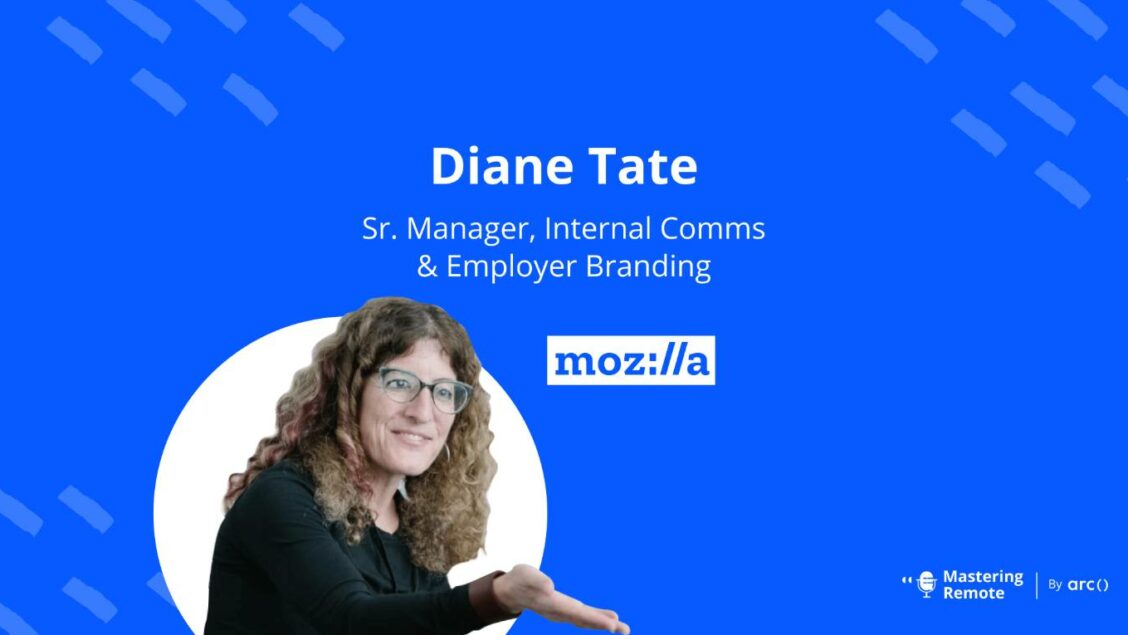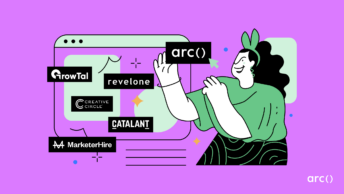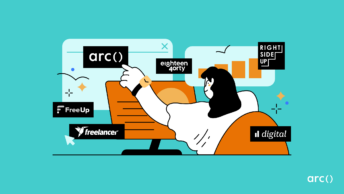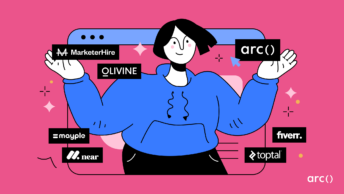If you want to hire good people, you should do employer branding. Companies today must be able to tell a compelling story of their workplace in order to capture the attention of top candidates.
In this episode, we speak to Diane Tate, Mozilla’s Senior Manager of Internal Communications and Employer Branding. You’ll hear how Diane Tate built Mozilla’s employer branding initiative from scratch — and how you can do it for your organization.
What you’ll learn in this episode of Mastering Remote:
- Why a strong employer brand can help attract hard-to-hire candidates
- How to research and build your employer value propositions from scratch
- The metrics to help measure the effectiveness of your employer brand story
Looking for top talent fast? See how Arc can help you:
⚡️ Find developers, designers, marketers, and more
⚡️ Freelance or full-time remote + fully vetted
⚡️ Save up to 80% with global hires
Hire top talent with Arc risk-free →
Company Brand and Employer Brand Are Different
If you’re new to the idea of “employer branding”, Diane broke down the difference:
- Corporate brand is associating certain feelings with an experience of a product or a service.
- Employer brand is the experience that employees feel, the value proposition of a place to work:
So what is it like to work there? What’s valuable about working there? Why would I invest my career there? What’s the most compelling thing about this company that would make me want to join and invest my future in this company?
If You Want To Hire The Best, You Need An Employer Branding Strategy
Diane thinks that competing for the best talent requires strong employer branding. She views employer branding work as “evergreen,” meaning it’s an investment that will pay off long-term.
And it’s work that’s best done before you start posting job descriptions — as in a competitive market, you have to stand out:
You’ve got to put your best foot forward. You’ve got to be authentic and you’ve got to make the experience of working at your company super accessible. That’s why storytelling is so important.
If you’re reading a website or a blog, if you’re reading it through the company’s voice, it’s not accessible to candidates. Candidates want to hear from their peers, they want to hear what the real deal is, so that’s why storytelling and branding are so important.
Read More: 10+ Software Engineer Interview Questions to Find Top Dev Candidates
Employer Branding Is The Base of Your Company Story
In the competitive world of hiring technical talent, first impressions count. To create a solid story to show the world who you are, you first need to get the foundations solid. This is where employer branding comes in:
It became really clear that the core foundation for employer branding is an employer value proposition.
And that is true, whether you’re an established brand or not, you really need to craft and develop your employer value proposition, whether you’re a young company or not, because it’s the scaffolding for all of your storytelling and how you’re going to show up in the world to your candidates.
Spend Time Vetting Agency Partners
Mozilla had the help of an agency, Job Portraits, for their employer branding refresh:
I think a crucial part was finding the right agency. If you don’t have the right agency, it can be really tough. It’s almost like a therapist. They really have to know your stuff.
Base Your Employer Branding Strategy on Facts
Start with your existing materials and culture if you’re an established company looking to work on your employer brand like Mozilla:
We actually did a full audit of all of our online materials, and we got people’s impressions and reactions from that. And then we married the two, and said: this is why our people are here.
And this is what the people that we want here are looking for. And then we developed some taglines. They’re really statements, but they’re statements around what our value proposition is.
Diane’s other tip is to make sure your company’s employer brand and product brand are aligned: “That’s super critical. You have to have integrity in their brand.”
Read More: How to Implement a Welcoming Software Developer Onboarding Process
Get The Whole Team Involved In Creating Employer Brand
Getting people on board with change can be tough. But Diane recommends ensuring the whole team is involved in creating the new employer brand:
I think it was the fact that we brought folks through the whole process, so that when we got to the point where we had these nice value propositions, it wasn’t just like this baked thing that we were just expecting them to sign off on, but they were a part of the whole designing, the whole exercise.
Leverage Opportunities To Launch Your New Employer Branding
Mozilla received a Best Workplaces award from Fast Company at around the same time their new employer branding was being gently rolled out on the website and social media:
So we kind of used that as the anchor to convey out to the whole company, like we had won this thing. But it was less about “Hey, and now we’re doing employer branding,” right? Like it was more just: “We won this thing, and yeah, we have a new blog. We have a new careers website now.”
As Diane told us, the award made a good anchor, “…because I think internally folks don’t necessarily care that I’m doing an employer branding exercise, but they do care about their friends and what the website looks like. And being able to refer folks to Mozilla.”
Read More: How to Find Developers: 18+ Expert Tips & Essential Strategies
Measuring Employer Brand Impact Is Difficult, But There’s A Way To Do It
Diane was straightforward: “Branding in general is elusive and difficult to measure.” That said, branding, like any investment, should be monitored.
My advice to folks is first: just look at the funnel. The real, defining thing is your funnel. Recruiting is a funnel exercise.
And employer branding is the top of the funnel. It’s the first impression that folks will get of your company as a potential place to work. Are people applying? Are they even looking at your website? Do you have anything going on?
The Mozilla team also looks at metrics like their scores on Glassdoor, along with team churn and time-to-hire. Diane reminds us that “you kind of have to be thoughtful about what problem you’re trying to solve, what your organization needs, and can also go overboard on metrics.”
You can also try Arc, your shortcut to the world’s best remote talent:
⚡️ Access 450,000 top developers, designers, and marketers
⚡️ Vetted and ready to interview
⚡️ Freelance or full-time








